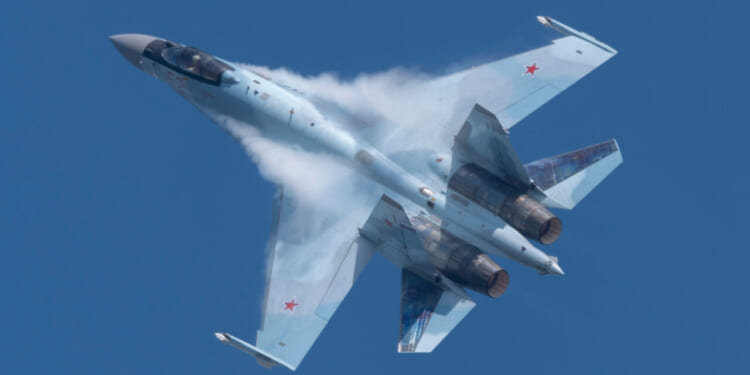Russian aircraft have been violating countries’ airspace more frequently in recent weeks.
Two Russian platforms have been spotted in the airspace above Alaska. According to the North American Aerospace Defense Command (NORAD), two Su-35s and two Tu-95s were detected operating in the Alaskan Air Defense Identification Zone (ADIZ). In response to the situation, nine American aircraft, including F-16 Fighting Falcons, E-3 Sentrys, and KC-135 tankers, were scrambled to identify and intercept the Russian jets. This incident comes just one day after US president Donald Trump wrote on Truth Social that he believed Ukraine was capable of re-capturing all the territory it had lost to Russia over the last three-plus years of war. This announcement from Trump was surprising, as the president previously called on Kyiv to make concessions to Russia in order to achieve a more imminent ceasefire.
Moscow has violated international airspace more frequently in recent weeks. Earlier in September, European nations were put on high alert after Russian unmanned aerial vehicles were shot down by Polish and NATO allied warplanes after crossing into Poland’s airspace. Shortly after this incident, Estonia reported that Russian fighter jets had crossed into its own airspace.
The Su-35
The Sukhoi Su-35 remains one of Russia’s workhorses in its aerial fleet. Designated by NATO as the Flanker-E/M, the twin-engine, 4.5-generation platform was originally conceptualized during the Cold War as the definitive production iteration of the Su-27 “Flanker.” The Russian jet is powered by a pair of turn/UFA AL-31F 117S turbofan engines that enable the fighter to fly at speeds reaching roughly Mach 2.25 (times the speed of sound). In addition to its top speed, the Flanker-E is loaded with ordnance power. The Russian fighter can carry an array of air-to-surface and air-to-air missiles, including the long-range Kh-48 UshE. As explained by Air Force Technology, “The Su-35 can be armed with a range of guided bombs, including the KAB-500Kr TV-guided bomb, KAB-500S-E satellite-guided bomb, LGB-250 laser-guided bomb, Kab-1500Kr TV-guided bomb and KAB-1500LG laser-guided bomb. The aircraft can also be armed with 80mm, 122mm, 266mm, and 420mm rockets.”
The Tu-95
Like the Su-35, the Tu-95 Bear Bomber was conceptualized in the Soviet era. After the United States introduced its own strategic bombers during World War II, the USSR prioritized developing its own counter. Soviet officials issued a request for a bomber series capable of flying long ranges in order to strike targets across the continental United States. The resulting Bear bomber, designed by the design bureau led by Andrei Tupolev, was sufficient. Four Kuznetsov NK-12 engines with rotating propellers power the platform, making it one of the loudest bombers in service across the globe today. Over the years, the Tu-95 has undergone several overhauls in order to remain relevant in modern times. Notably, the Soviet Tsar Bomba nuclear bomb was released from a modified Bear variant specially equipped with redesigned engines, suspensions, and release mechanisms in order to successfully release the large nuclear weapon.
About the Author: Maya Carlin
Maya Carlin, National Security Writer with The National Interest, is an analyst with the Center for Security Policy and a former Anna Sobol Levy Fellow at IDC Herzliya in Israel. She has bylines in many publications, including The National Interest, The Jerusalem Post, and The Times of Israel. You can follow her on Twitter: @MayaCarlin.
Image: aarrows / Shutterstock.com


















